|
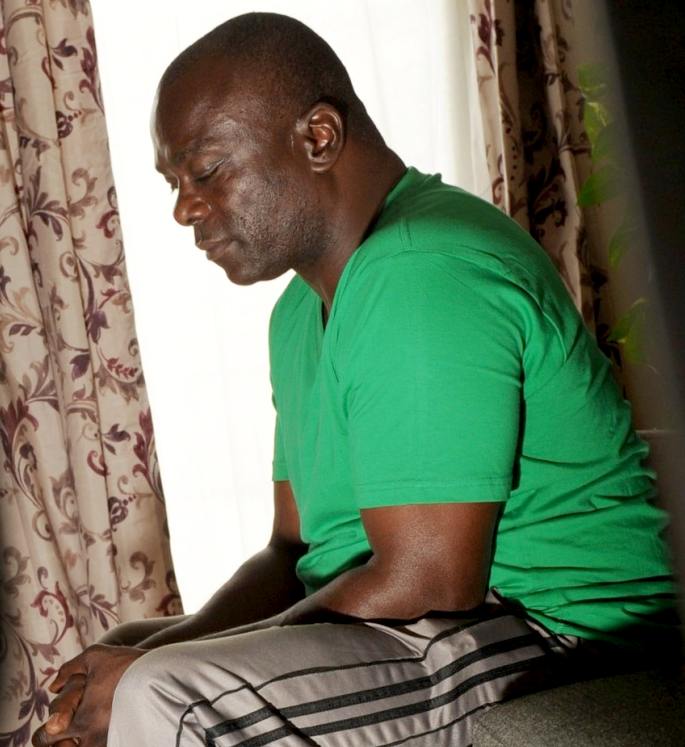
DIE
HARD - He was in the wrong place at the wrong time, Kirk Odom had his
life taken from him by a system that was corrupt for a noble cause. This
is called Noble Cause Corruption. Many UK judges openly admit that
wrongful convictions happen routinely in the UK, but say that that is the
price that they are willing to bear, to obtain convictions in other cases
where the prosecution may not have done their homework. We say that that
is akin to murder. Taking a man's life by whatever means is a crime
against humanity. There can be no doubt that Mr Odom's life has been taken
from him. How many more lives will be claimed this way before the US and
UK justice systems wake up to being murderers.
JUNE
2015 USA - HOW
EASY IS IT TO GAIN A CONVICTION BY STATING FALSEHOODS AS FACTS
On 3 April 1981 Kirk Odom was walking near his home in
Washington DC when he was stopped by a police officer. It was just a random passing in the street. Odom had done nothing, been nowhere. He was an unexceptional 18-year-old trying to raise his infant daughter Katrice who was then less than a year old.
The officer pulled a sketch of an unidentified black man out of his pocket and invited Odom to agree that the person in the drawing looked strikingly like him. “I said, ‘No, it doesn’t look like me,’” Odom recalls. Then the officer took the teenager’s name and address, and allowed him to walk away thinking that was the end of that.
But that was not the end of that. A few days later, Odom was arrested and charged with a brutal crime. Two months previously a young woman had been attacked by a stranger who had broken into her apartment before dawn, held a gun to her head, blindfolded her and tied her up, then sodomised and raped her before making off with
$400 in travellers’ checks.
The prosecution case against Odom was flimsy at best. The victim had seen her assailant only fleetingly and in the dark, and the composite drawing that had been based on her description – the one that the police officer had thought looked just like him – referred to a black male of “medium complexion” when Odom’s skin is very dark. He also had a convincing alibi, having been asleep at his mother’s house at the time of the attack.
With such shaky evidence, Odom assumed that the authorities would soon realise their mistake and the whole nightmare would go away.
“I didn’t think anything was going to come of this, because I hadn’t done anything,” he says.
But when it came to trial, prosecution lawyers produced their ace card. They had a hair, they told the jury. A single strand of “negroid” hair found on the victim’s nightgown that must have come from the
rapist.
Special Agent Myron T Scholberg of the Federal Bureau of Investigation stood before the jury and delivered the coup de grace. He worked at the FBI’s grand-sounding microscopic analysis unit in Washington, he said, where he was a world-leading expert in the even grander-sounding science of “hair microscopy”. Scholberg told the jury that he had analysed the rapist’s hair found at the crime scene and compared it microscopically with a sample hair taken from Odom’s head. The comparison had produced an exact match, which was significant because that was a “very rare phenomenon”. Having performed thousands of similar hair examinations over the previous 10 years, the
FBI agent told the court, there had been only eight or 10 times when hairs from two different people were so similar that he could not tell them apart – suggesting the firm probability that the rapist’s hair and Odom’s hair had come from the same scalp.
That is more or less the way the Dr Melanie Liebenberg told it to a Jury
in Hove, East Sussex in another sex allegation case (see below).
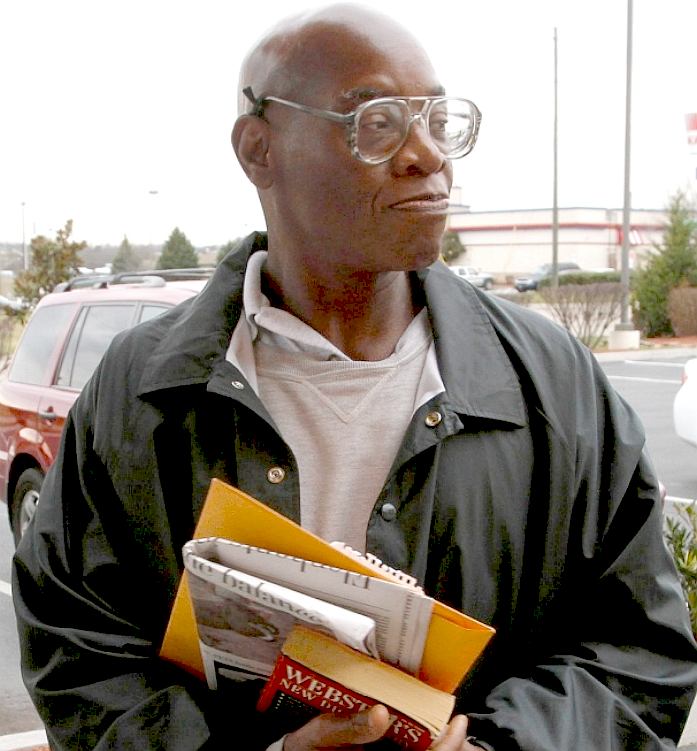
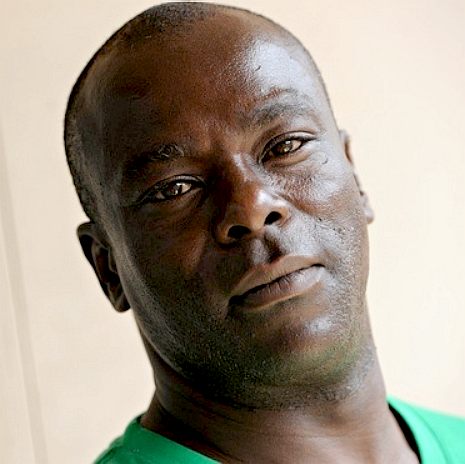
JAILED FOR 22 YEARS ON BOGUS HAIR EVIDENCE
The testimony, proudly invoking the certainties of science, did its job: the verdict came in guilty. On the basis of that single hair Kirk Odom was to spend the next 22 years in prison and a further nine living the half-life of a paroled sex offender.
The trouble was, Scholberg’s testimony wasn’t scientific, and it wasn’t true. Fast forward to 2009, by which time Odom had spent 28 years in prison and on parole. In that year the National Research Council of the National Academy of Sciences released a landmark report into the practice of forensic analysis in the US. The report pointed out a basic problem with the idea that you can compare two hair samples and produce a positive match. No statistics exist, the council pointed out, that map the distribution of hair properties in the general population, and that renders it impossible to make any meaningful calculations about the probabilities of a particular hair type being found. As a result, “all analyst testimony … stating that a crime scene hair was ‘highly likely’ to have come, ‘very probably’ came, or did come from the defendant violates the basic scientific criterion that expressions of probability must be supported by data”.
To put that in plain English, Scholberg’s statement to the jury at the Odom trial – that the match he had found between the defendant’s and the rapist’s hair was a “very rare phenomenon” – was complete fantasy.
Where did this pseudoscientific belief in the ability to match hairs come from? Chris Fabricant of the Innocence Project, which has led much of the work in DNA exonerations of innocent prisoners, and co-author William Carrington have traced it back to 1855 when prosecutors in Mississippi claimed they could identify the murderer of a cotton plantation owner by hairs found at the crime scene.
The sophistication of the analysis – or lack of it – barely changed over the next century. But what did change after the second world war was that the FBI embraced the technique, embellishing it with the scientific seal of approval.
Take the FBI’s 1977 pamphlet Microscopy of Hair: A Practical Guide and Manual. Its text is peppered with scientific language – sebaceous gland, papilla, uniserial, vacuolated, cortex, cuticle. The assumption running through its 53 pages is that with the help of a microscope a skilled examiner can positively match two hairs to the same person with a high probability of accuracy, by comparing qualities such as colour, diameter, cuticle, scales, pigment and so on.
Clarence Kelley, then director of the FBI, wrote a starry-eyed foreword to the manual in which he expressed his hope that it would promote “maximum use of physical evidence in our criminal justice system of America”. It certainly did that. At its peak, the microscopic analysis unit in Washington had 11 special agents devoted entirely to hair comparisons, working on up to 2,000 cases a year and testifying 250 times annually. Between 1972 and 1999, the unit produced at least 2,500 positive hair matches that were used in criminal cases, and tens of thousands more may have resulted from FBI “experts” training detectives to use the spurious technique in individual states across the country.
In April this year, as Spencer Hsu of the Washington Post first reported, the FBI and the justice department formally acknowledged that it had given flawed testimony in almost all the criminal trials in which its agents were involved. Those cases included 32 that put defendants on death row – nine of whom have already been executed.
Perhaps the most remarkable part of this sorry saga is that it took the finest investigative minds in the US justice system until April 2015 to make that formal recognition. Yet the FBI was warned about the dodgy science at least as early as 1985, when the FBI Academy in Virginia held a three-day international symposium in which forensic experts from all over the world came together to consider hair analysis as an investigative tool. A senior manager from the FBI laboratory, Harold Deadman, told his global partners: “We are believers in hair comparisons.”
But panellists from other parts of the world were not so enamoured. The chief scientific officer for the London Metropolitan police told the gathering that “there is a basic reluctance among examiners in the United Kingdom to examine hairs because of the generally low to very low evidential value put on most hair matches by the average hair examiner in the UK.”
Most tellingly, a criminologist from New York called Peter De Forest raised objections to the typical testimony that was then being given by FBI forensic examiners in umpteen US trials. He read out to the symposium the kind of statement that an FBI expert would commonly tell the jury: “These hairs were found to be similar and in my experience I have examined thousands of hairs and I have never found two hairs from different sources that were alike.” Then De Forest told the gathering that in his opinion that testimony was “very misleading and it is not substantiated by any data”. He was referring to the testimony that was given, almost verbatim, by Scholberg at Kirk Odom’s trial four years earlier.
Why then did it take a further 27 years to declare Odom innocent? And why did the FBI’s team of highly trained, internationally connected specialists cling to the procedure, putting thousands more potentially innocent people behind bars?
It seemed like a good idea to put those questions directly to Myron Scholberg. He’s 82 and long retired from the FBI. When I reached him by phone at his home in Virginia he wasn’t keen to reminisce on the subject. “I’m not going to discuss that any more,” he said. The call ended with him slamming down the phone, but before he did so he shared a few choice words that revealed his opinion about the nationwide inquiry that is under way into the FBI’s use of hair analysis: “It’s all a bunch of baloney,” he said. “It’s all a bunch of poppycock.”
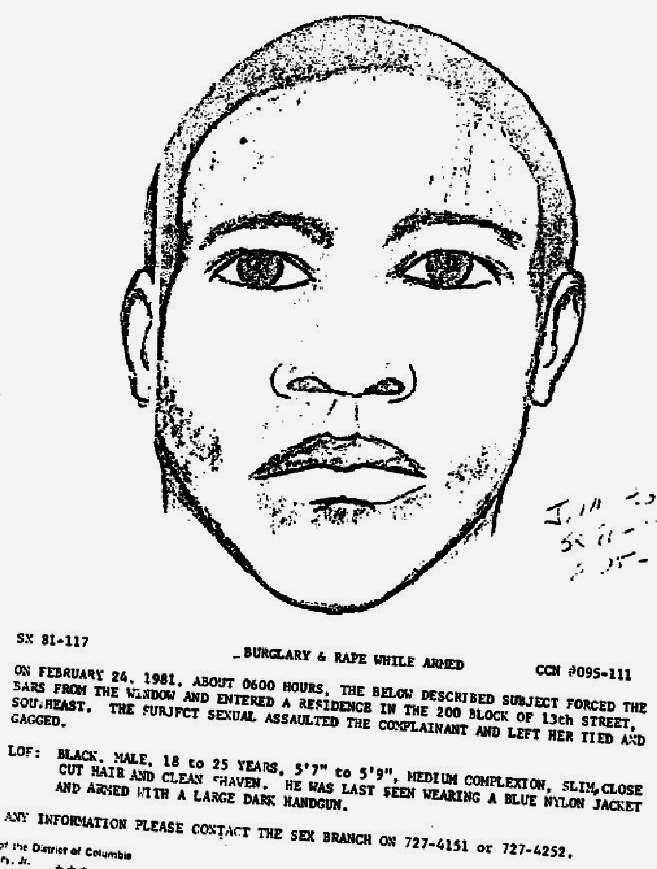
WHISTLEBLOWER
There is another former FBI agent, a veteran of 16 years in the Washington forensic laboratory, who is happy to talk. Fred Whitehurst is the whistleblower who first sounded the alarm from inside the institution, setting the ball rolling that would lift the lid on the hair analysis disaster and eventually lead to the clearing of Odom’s name.
I asked Whitehurst why he thought the FBI had stuck with hair comparisons years after the scientific credibility of the technique had been called into question. “It got convictions,” was his simple reply.
Whitehurst began telling his superiors within the FBI that there were serious problems within the forensic lab as early as 1990, when he learned that one of his colleagues had given false testimony in a high-profile trial. Delving into the activities of that colleague, Whitehurst’s inquiries led him in due course to the almighty mess caused by hair microscopy.
It wasn’t a quick or easy process. Between 1992 and 1997 Whitehurst wrote 237 letters to his superiors alerting them to problems within the FBI lab. Their response? “It isn’t a good idea being a whistleblower at the FBI,” Whitehurst said. “They will crush you. They will send you to be psychiatrically evaluated, as they did to me, just like in the old Soviet Union.”
Whitehurst was sidelined and largely ignored. But his persistent blowing of the whistle did succeed after many years in attracting the attention of dogged and courageous public defence lawyers who began taking up the cases of long-term prisoners put behind bars by the pseudoscience of hair analysis. With the help of DNA testing that came on stream in the late 1980s offering truly scientific and definitive analyses of hair samples, they managed to obtain the first exoneration. On 15 December 2009, after spending 28 years behind bars for rape and murder, Donald Gates walked out a free and innocent man. For his wrongful conviction, the authorities gave him $75 and a bus ticket back to Ohio.
Had a lesser lawyer than Sandra Levick of the DC public defender service been on the Gates case, it might have ended there. But Levick’s curiosity was piqued. If her client had been put away for almost three decades because of the fantasy of hair science, how many others were out there? She began asking around, and in 2010 her inquiries led to a knock on Odom’s door. Did he want some help looking into his case, he was asked by one of Levick’s investigators.
Did he heck. By then he had completed his 22 years in prison and was seven years into parole as a sex offender – an existence that involved regular lie-detector tests. “They still felt I was lying when I said I didn’t do it, when they were sure I did do it,” he said. The hair – that single hair that had put him away for so long – told a different story. Levick managed to track down a box of crime scene materials from the Odom case which included the hair used to convict him, as well as the woman’s robe stained with the rapist’s semen. DNA tests proved beyond any doubt that Odom was not the man.
Odom was formally exonerated on 13 July 2012. It was his 50th birthday, a rare moment of serendipity after so many years of hurt. “That was a beautiful day,” he says, recalling that when he got the phone call from Levick telling him his innocence had been affirmed he was on a plumbing job with his brother in a DC suburb. “I remember screaming out loud. People’s house lights came on – I was in the wrong neighbourhood making a lot of noise, sharing my joy with everybody. It was the first time in all those years I really felt free.”
Three men so far – Gates, Odom and Santae Tribble – have been exonerated as a result of the epic unravelling of the FBI’s faith in hair analysis. Everyone now agrees they are just the tiniest tip of a massive iceberg. With 2,500 cases awaiting review, and possibly tens of thousands more as yet unidentified across the 50 states, it could be many more years before this tale is done.
“We rely on fair trials at which the government has to prove guilt beyond all reasonable doubt,” Levick said. “In perhaps tens of thousands of these cases, the defendant was denied a fair trial as the prosecution produced false or misleading testimony from hair analysts – we have to re-examine all of these cases, whether or not we can prove actual innocence.”
Odom is married and has started a removals business with his wife called Harriet & Kirk Moving Company. He no longer has to go around wondering if people know he’s a registered
sex
offender. He’s rebuilt his relationship with his daughter Katrice whose childhood years had been untimely ripped from him.
He worries that many hundreds or thousands more like him are still stuck wrongly in a cell somewhere. “I just want to keep on telling my story to whoever listens,” he said, “in the hope it will help people still there.”
I ask him what he would say to Scholberg if he came face to face with him. He laughs and shakes his head. “I think I’d just ask for an apology. That’s what I’d do.”
Really? There’s been no apology? No he says. Not from Scholberg, not from Scholberg’s bosses at the FBI lab, not from the director of the FBI, not from prosecutors, not from the judge at his trial, not from the justice department, not from President Obama. Nobody has said sorry.
Would that be enough, I ask him. Would hearing someone in a position of responsibility say sorry be enough?
“It would be a start,” Odom says. “You know, it would really be a start.”
Ref: The Guardian, Ed Pilkington
UK
SEX CONVICTION NORMS -
How
is Kirk Odom's case different from the case below? Apart from the fact that Melanie
Liebenberg misled the Jury as to anatomical evidence, rather than the
matching of a hair
- It isn't. Dr Liebenberg used out of date medical evidence to seal a
wrongful conviction, the FBI used outdated anatomical evidence. Is it not
time that the UK did the research to not only convict those guilty of offences, but also to
protect those falsely accused of crimes. Noble cause corruption
should be a crime against the state, admitted to the statute books.
Howsoever noble the cause, corruption is corruption.

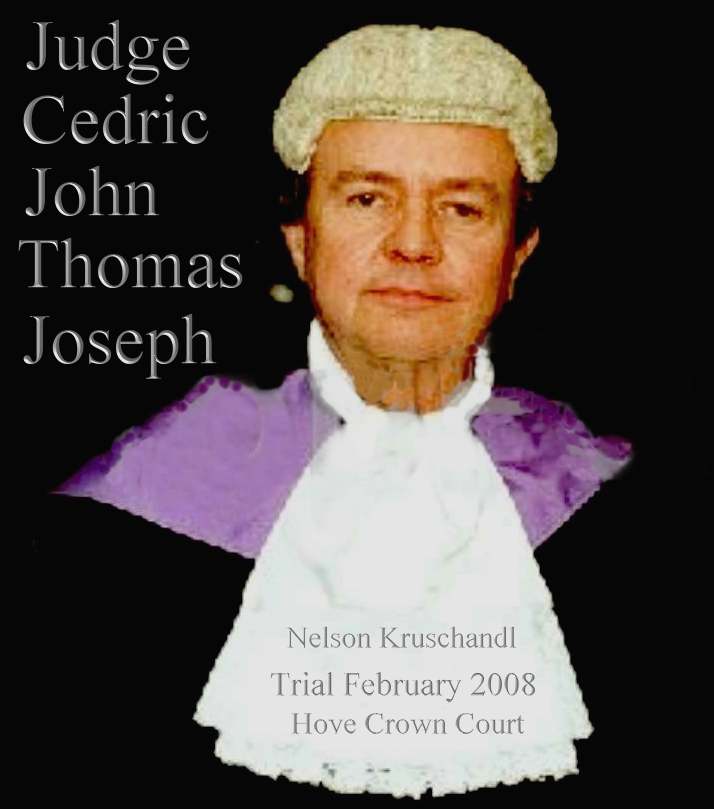
SEVEN
YEARS AND COUNTING - Dr Melanie Liebenberg was called as a so-called expert witness in the case below. Sometimes
experts think that they are doing the right thing by vending an opinion, not
based on scientific facts and observation - and in this case apparently
abandoning the correct procedure because even a partial examination was
not supporting the claims. New guidance was about to be published, but
this was not mentioned to the Jury or Judge Cedric Joseph. The girl in
this case had claimed multiple penetrations. She
was examined in 2006 using old texts as the basis to compile a
report.
A
trial was held in February of 2008, and much the same as in Mr Odom's
case, Dr Liebenberg's opinion was used to clinch a conviction - that was
otherwise based on no evidence, other than the testimony of the girl as to
these events taking place - about which application had not been made to
call her out. Her mother claimed not to have seen anything or
had complaint of anything, but later when caught lying, told about a work
diary that she had hidden in her loft, so that the Police could not find
it.
In March of 2008
new guidance was issued. In this guidance, the correct procedure for
examining claimants is spelled out. We wonder if dear old Melanie had seen
this document in draft form before giving her evidence. If so, that would
compound the misdirection that the jury were given and that would be fraud.
If not, then it is a curious coincidence that Liebenberg failed to conduct
her examination in a manner that would benefit the defence, but would most
assuredly disadvantage the defendant. As reporters, we have seen the good
doctor's report from 2006. In this report Liebenberg says that Claimant H
was: "Tightly closed and could not be opened with labial
traction." Here she was referring to the girl's hymen. We have also
read the above Guidance, and in those pages it is clear that if a girl is
interfered with more than once, her hymen will not be tightly closed.
There is a reliable method of measuring virginity, using the distance from
the hymen to the vaginal wall. The instrument used is called a Colposcope.
In this case the examiner did not obtain the adolescent's medical history,
so did not know that she had a congenital birth defect, which fortunately
she could not have attributed to the defendant.
It is important
when constructing a jigsaw puzzle, to have all the pieces. For example,
the examiner did not know that there had been heated exchanges between the
defendant and her mother and that he'd recently called off an engagement.
The girl was also a gymnast and previously rode horses. None of the Class
3-4 signs were present, as one might have expected if as claimed, the girl
had been regularly penetrated. The trial judge told the jury this might
have been on 40 occasions - thus virtually instructing the jury to
convict.
Dr
Liebenberg failed to mention to the jury that none of the expected
lacerations, transections and/or healed scars to the fossa or posterior
fourchette - or angular clefts or tears, or labial adhesions of the hymen
were present. She might have mentioned that the absense of any and all of
these signs, given the claimed regularity of abuse, was not consistent
with the allegations. Dr Liebenberg could have mentioned that had any of
these signs been in evidence, that would have been either definitive proof
of sexual abuse or at best highly suspicious circumstances. But, as we
stress - none
of these were present and the jury had a right to know that before
sending a man to prison.
DIE
HARDER - This
evidence does not stand alone. There is a diary that casts doubt as to
opportunity which the girl's mother hid in her loft so that the police
would not find it. On the stand under duress the girl's mother revealed
its existence, but then she knew that the defence would not have time to cross reference the
dates in it with the girl's testimony. Judge Cedric Joseph then wrongly told the
jury that this diary was the defendants - and Still the CCRC
turn a blind eye.
LINKS
& REFERENCE
The
Guardian US news 2015 June 23 FBI evidence single hair Kirk Odom
https://www.documentcloud.org/documents/2081513-microscopy-of-hair.html
https://www.ncjrs.gov/pdffiles1/nij/grants/228091.pdf
http://www.theguardian.com/us-news/2015/jun/23/fbi-evidence-single-hair-kirk-odom
http://twitter.com/edpilkington
https://www.fbi.gov/
http://www.telegraph.co.uk/Romford-and-Eastbourne-hospitals-dragged-in-to-NHS-care-scandal.html
http://www.lushingtonclinic.co.uk/consultants/dr-melanie-liebenberg/
www.drfosterhealth.co.uk/consultant-guide/Dr-Melanie-Anne-Liebenberg
http://www.pathguy.com/abuseexm.htm
http://womenshealth.about.com/cs/cevicalconditions/a/colposcopy.htm
http://en.wikipedia.org/wiki/Virginity_test
http://en.wikipedia.org/wiki/Virginity_fraud
http://www.nhs.uk/Conditions/colposcopy/Pages/Introduction.aspx
http://www.pathguy.com/abuseexm.htm
Colposcopy
Virginity_test
Virginity_fraud
Medical
conditions colposcopy
Virginity
tests zulu south africa
This
site is protected under Article10
of the European Convention on Human
Rights and Fundamental Freedoms.
FAIR
USE NOTICE
This
site contains copyrighted material the use of which has not always been
specifically authorized by the copyright owner. We are making such
material available in our efforts to advance understanding of
environmental, political, human rights, economic, scientific, and social
justice issues, etc. We believe this constitutes a 'fair use' of any such
copyrighted material as provided for in section 107 of the US Copyright
Law. In accordance with Title 17 U.S.C. Section 107, the material on this
site is distributed without profit to those who have expressed a prior
interest in receiving the included information for research and
educational purposes.
|




